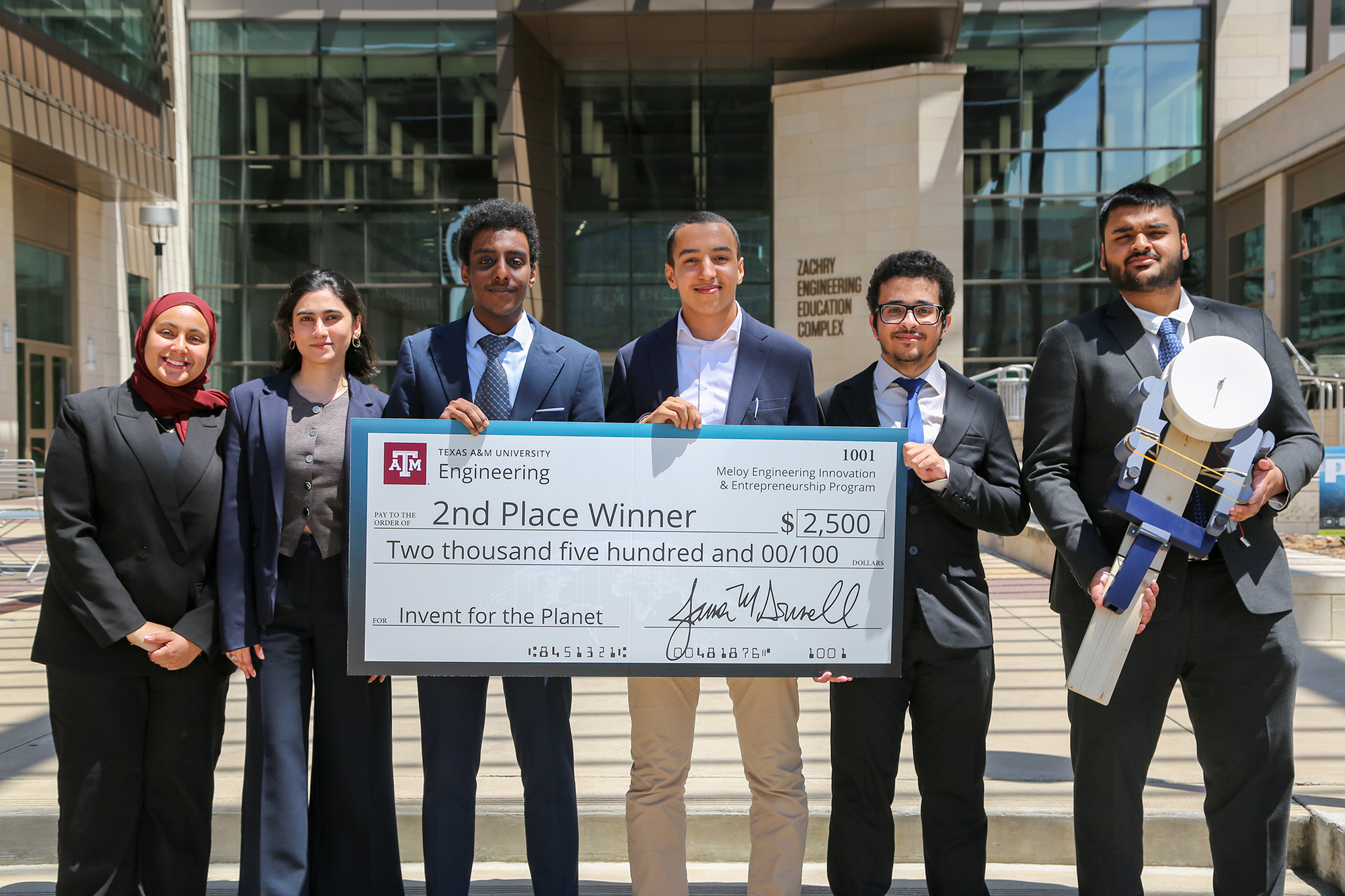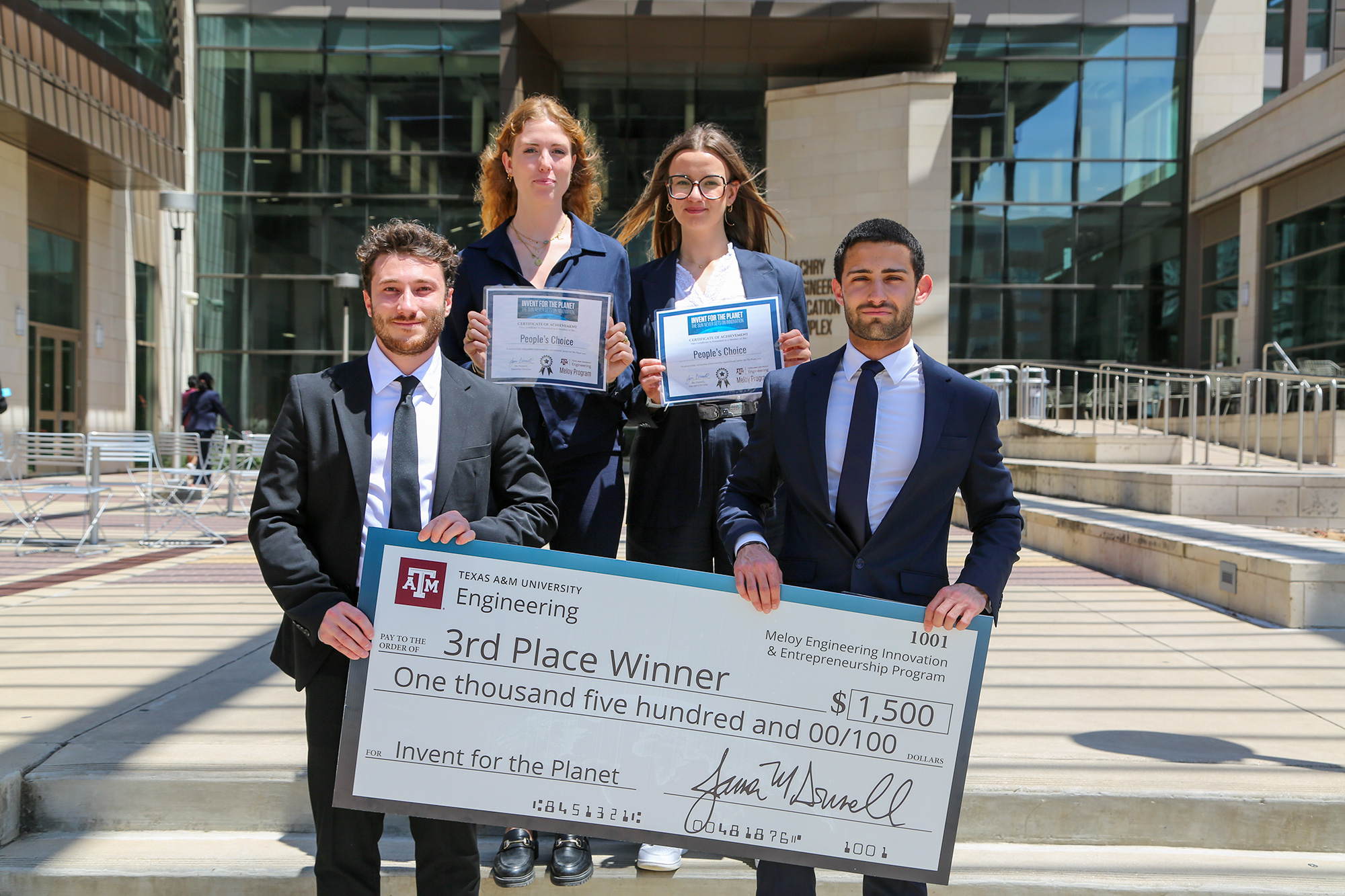Real engineering happens when creativity meets compassion. Solving problems isn’t just about efficiency — it’s about empathy.
In just two years, Invent for the Planet has grown from 350 to over 1,300 participants — a testament to the global momentum behind student-driven innovation. Hosted by the Meloy Program at Texas A&M University’s College of Engineering, the annual competition challenges university teams from around the world to tackle urgent real-world problems with market-ready solutions.
This year, students from 36 universities across 22 countries spent an intensive weekend in February brainstorming, prototyping and pitching innovative ideas at their home campuses. Seven teams advanced to the finals in College Station, Texas, where months of development culminated in high-stakes pitches to a panel of judges.
But the experience extended far beyond competition. Students connected over barbecue and baseball games, public poster sessions and the trademark Aggie hospitality, leaving with not just professional growth, but new global friendships and insights.
Innovation Across Borders
Invent for the Planet stands out for its international scope, giving students the chance to see how teams around the world integrate regional perspectives and cultural understanding into their designs.
“One thing that stood out to me was how every team brought their own cultural and regional perspective,” said Mohamed Bakri, a member of second-place team Deep Blue from Texas A&M University at Qatar. “With limited time and resources, teams created simple but highly effective solutions. The way teams pushed the boundaries to achieve this was truly inspiring.”
Reham Hiasat, from Jordan’s Al Hussein Technical University and a member of the first-place team Aquarentures, echoed this sentiment.
“It wasn’t just about exchanging ideas. It was about seeing how others approach problems and collaborate. It challenged my thinking and helped me grow, not just as an engineer, but as a person. This experience showed me that engineering is a universal language, and that through it, we can bridge cultures, exchange ideas and build solutions that matter.”
Building with Purpose
With a focus on customer needs and real-world application, teams tackled issues from sustainable farming to clean water access. Each team created a two-minute video, followed by a 10-minute pitch and a five-minute Q&A, honing their entrepreneurial skillsets.
Guided by the Meloy Program’s mantra, “Love the Problem,” students approached engineering their solutions not just as a technical challenge, but as a human-centered pursuit, where understanding the people it serves is just as vital as the innovation itself.
“Real engineering happens when creativity meets compassion,” said Hiasat. “Solving problems isn’t just about efficiency — it’s about empathy.”
A Vision for the Future
Invent for the Planet left participants not only inspired by the possibilities of engineering, but by the potential for their innovations to drive meaningful change on a global scale.
“This isn’t just a competition. It’s a window into what the future of engineering can and should be,” explained Hiasat. “I left Texas with a heart full of gratitude, a mind buzzing with ideas and a dream that now feels so much closer. If this is what the future looks like, I want to help build it.”
Winning Teams
First Place: Aquarentures

Representing Al Hussein Technical University in Jordan, Aquarentures earned first place and a $5,000 prize for their low-cost, portable water sensor designed to detect toxic heavy metals in drinking water. With over 200 million people worldwide affected by contaminants like lead and arsenic, the team aimed to tackle a global public health crisis head-on.
Their device uses a curcumin-based chemical solution to detect the presence of harmful metals, delivering accurate results for just $1 per test. Compact, user-friendly and produced for only $20, the sensor is designed for both accessibility and scalability.
Judges praised Aquarentures for their working prototype and strong user-centered approach. The solution balances scientific innovation with practical application, delivering clean water one test at a time.
Second Place: Deep Blue

Texas A&M University at Qatar’s team, Deep Blue, secured second place and a $2,500 award with the OmniWave 1.0, a durable and affordable wave energy converter built for coastal communities that lack reliable electricity.
Unlike traditional offshore systems that are expensive and complex, OmniWave 1.0 offers a simplified, fixed-location design that captures energy from waves of any size. Using a ratchet and gear system to convert linear wave motion into rotational force, it delivers consistent electricity through an onboard generator. Built for just $750, the device is designed for easy deployment and long-term use.
Deep Blue plans to operate as a nonprofit, reinvesting earnings to scale production and partner with global nongovernmental organizations. Their vision is to bring renewable power to communities often overlooked by conventional energy infrastructure.Third Place: Carbon Catch

Taking third place, $1,500 and the People’s Choice Award, Carbon Catch from École Nationale Supérieure d’Arts et Métiers in France presented a promising solution to industrial carbon emissions, turning a major environmental threat into an economic opportunity.
Their device uses a rotating mesh made from recycled aluminum that captures carbon dioxide and channels it into a water tank where it’s converted into calcium carbonate. This compound is widely used in manufacturing materials and can be sold as a commercial byproduct, helping industries offset emissions while creating value.
With only $90,000 needed for launch and projected profitability within 17 months, Carbon Catch has already engaged energy companies to pilot their system. Their approach reimagines carbon capture as a sustainable business model, positioning emission action not as a cost, but as a catalyst for growth.
Learn more about Invent for the Planet.